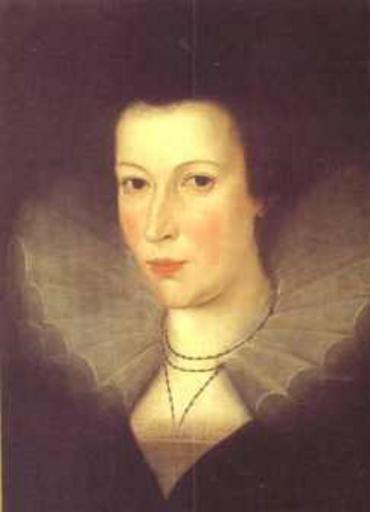MAKE A MEME
View Large Image

| View Original: | Mary_Talbot,_Countess_of_Shrewsbury,_wife_of_Gilbert_Talbot,_7th_Earl_of_Shrewsbury,_daughter_of_Bess_of_Hardwick.jpg (243x336) | |||
| Download: | Original | Medium | Small | Thumb |
| Courtesy of: | www.flickr.com | More Like This | ||
| Keywords: people portrait Mary Talbot, Countess of Shrewsbury (1556 – 1632) was the wife of Gilbert Talbot, 7th Earl of Shrewsbury. Born Mary Cavendish, she was the daughter of Sir William Cavendish, who died when she was about a year old, and his wife Bess of Hardwick. By all accounts, Mary inherited her mother's strong will and colorful character. Bess of Hardwick remarried to Sir William St. Loo, who left his wife everything when he died in 1564/5, making her one of the most eligible women in England. A number of important men began to court her, including George Talbot, 6th Earl of Shrewsbury. From The Living Age:[1] Lady St. Loo consented to give her hand and heart to the 6th Earl of Shrewsbury in consideration of his settling a large jointure on her, and marrying his second son, Gilbert Talbot, to her daughter, Mary Cavendish, and his daughter Grace to her son Henry Cavendish. These preliminary alliances were duly effected in 1568, one of the brides, Mary, being then not quite twelve years old. The parents were married soon after. She married her stepbrother Gilbert Talbot, later the 7th Earl of Shrewsbury, in 1568. Their children were: * George, 1575-1577 * Mary, later Countess of Pembroke * Elizabeth, later Countess of Kent * John, born and died 1583 * Alethea, later Countess of Arundel Although her family was Protestant, Mary converted to Catholicism as an adult. This may have been one of the reasons why she gave financial assistance to her niece Arbella Stuart in 1610, with the knowledge that the latter was planning to elope to the Continent. For this she was imprisoned in the Tower of London. She was tried for her role in the escape, and was heavily fined, but not released. Later, Arbella accused Mary of being involved in a Catholic plot. In 1615, after Arbella's death, Mary was released from the Tower, partly in recognition of her role in detecting the murder of Sir Thomas Overbury. However, a few years later, in 1618, she was called to give evidence in the course of an inquiry into the rumors that Arbella had secretly given birth to a child. Mary refused to testify, and was returned to the Tower, where she remained until her death. Mary Talbot, Countess of Shrewsbury (1556 – 1632) was the wife of Gilbert Talbot, 7th Earl of Shrewsbury. Born Mary Cavendish, she was the daughter of Sir William Cavendish, who died when she was about a year old, and his wife Bess of Hardwick. By all accounts, Mary inherited her mother's strong will and colorful character. Bess of Hardwick remarried to Sir William St. Loo, who left his wife everything when he died in 1564/5, making her one of the most eligible women in England. A number of important men began to court her, including George Talbot, 6th Earl of Shrewsbury. From The Living Age:[1] Lady St. Loo consented to give her hand and heart to the 6th Earl of Shrewsbury in consideration of his settling a large jointure on her, and marrying his second son, Gilbert Talbot, to her daughter, Mary Cavendish, and his daughter Grace to her son Henry Cavendish. These preliminary alliances were duly effected in 1568, one of the brides, Mary, being then not quite twelve years old. The parents were married soon after. She married her stepbrother Gilbert Talbot, later the 7th Earl of Shrewsbury, in 1568. Their children were: * George, 1575-1577 * Mary, later Countess of Pembroke * Elizabeth, later Countess of Kent * John, born and died 1583 * Alethea, later Countess of Arundel Although her family was Protestant, Mary converted to Catholicism as an adult. This may have been one of the reasons why she gave financial assistance to her niece Arbella Stuart in 1610, with the knowledge that the latter was planning to elope to the Continent. For this she was imprisoned in the Tower of London. She was tried for her role in the escape, and was heavily fined, but not released. Later, Arbella accused Mary of being involved in a Catholic plot. In 1615, after Arbella's death, Mary was released from the Tower, partly in recognition of her role in detecting the murder of Sir Thomas Overbury. However, a few years later, in 1618, she was called to give evidence in the course of an inquiry into the rumors that Arbella had secretly given birth to a child. Mary refused to testify, and was returned to the Tower, where she remained until her death. | ||||